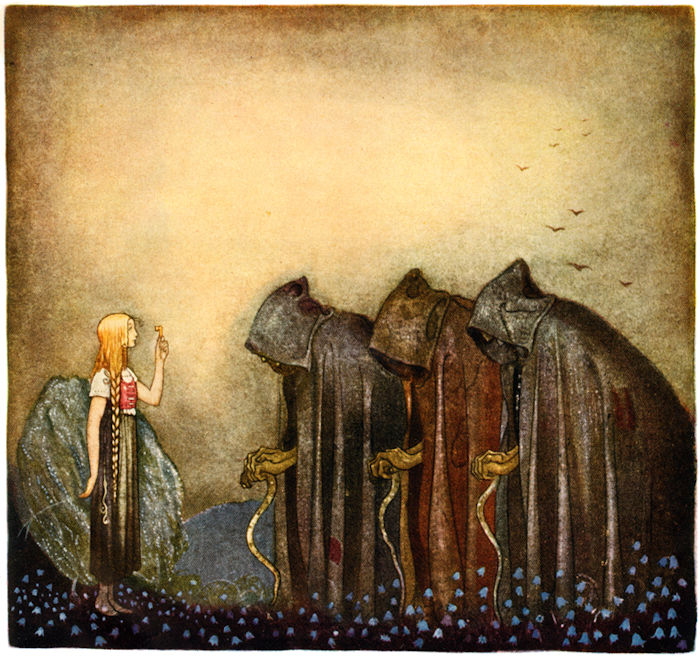Unusual Power Of Seidr: Norse Shamans Used Magic To Alter Destiny And See The Future
Ellen Lloyd - AncientPages.com - In Norse mythology, Seidr is the practice of magic and shamanism.
Shamans played a very important role in Norse society. These enigmatic beings were known for their unusual powers, and they were credited with the ability to alter destiny. Beings who mastered seidr were therefore as much feared as respected by people and even the Norse gods themselves.
Goddess Freya was the most powerful völva. Freya painting by James Doyle Penrose (1862-1932). Credit: Public Domain
Seidr – How Norse Shamanism Was Used
In his book, The Viking Way: Magic and Mind in Late Iron Age Scandinavia, author and archaeologist Neil Price explains how seidr was used in general. "There were seiðr rituals for divination and clairvoyance; for seeking out the hidden, both in the secrets of the mind and in physical locations; for healing the sick; for bringing good luck; for controlling the weather; for calling game animals and fish.
Importantly, it could also be used for the opposite of these things – to curse an individual or an enterprise; to blight the land and make it barren; to induce illness; to tell false futures and thus to set their recipients on the road to disaster; to injure, maim and kill, in domestic disputes and especially in battle."
Archaeological Evidence Shows Ancient Norse Shamans Did Exist
A Völva was a powerful female shaman, and her male counterpart was Vitki.
The practice of Seidr (in Old Norse, seiðr) is mentioned in many Norse sagas, and archaeologists have unearthed evidence of Norse shamans' existence.
A mysterious ancient grave with unusual artifacts that belonged to a Völva was found in Denmark. Some objects inside the grave suggest she was a Norse shaman. Scientists discovered an intriguing metal wand and seeds from the poisonous henbane plant inside her tomb. These two particular accessories are associated with a Norse shaman because the name Völva (vǫlva) is Old Norse and means "wand carrier" or "carrier of a magic staff".
The term Seidr originated from the ritual of the Norse to boil salt, which also happens to be a purification rite.
God Odin's Meeting With A Völva
Norse gods relied on the knowledge of a Seidr.
For example, when God Odin was determined to solve the mystery of his son's dreams, he mounted his horse, Slepnir, and made the long journey to the underworld, Nilfheim. There, he called up a Völva, and when she arose from her tomb, Odin introduced himself as Vegtam, the Wanderer, son of Valtam.

God Odin meets the Völva - Credit: Illustration by Carl Emil Doepler, 1905
The Völva gave him advice, but as soon as she recognized it was God Odin in disguise, she refused to answer any more questions and sank into her tomb, vowing to speak no more until God Loki's chains were unbound—that is, until the end of the world.
Female shamans were religious leaders of the Viking community, and they were usually required to invoke their deities, gods, or spirits, often before Viking warriors went to war.
Norns Were Masters Of Seidr
Being skilled in the art of magic and prophecy was considered important in the Norse community, as seidr was also God Odin's specialty. Norse shamans were said to possess the ability to shapeshift, send nightmares to people, and alter destiny.
Guldnyckeln by John Bauer (1882–1918). Credit: Public Domain
Norns, known as 'Shapers of Destiny' in Norse mythology, were masters of seidr.
The Norns were goddesses who ruled the fates of people and determined individuals' destinies and lifespans.
Three principal and very powerful Norns lived in the mysterious well of Urd ('fate'), which had its location beneath one of the roots of the giant ash tree – Yggdrasill (World Tree"), which formed a column linking the realms of the gods, humankind, the giants and the dead.
We encounter the Norns as goddesses of fate and destiny in Greek, Roman and Slavic mythology.
Updated on February 28, 2022
Written by Ellen Lloyd – AncientPages.com
Copyright © AncientPages.com All rights reserved. This material may not be published, broadcast, rewritten or redistributed in whole or part without the express written permission of AncientPages.com
More From Ancient Pages
-
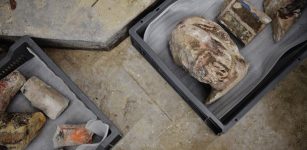 Surprising Discovery Of Ancient Sarcophagus At Paris’ Notre Dame Cathedral
Archaeology | Mar 16, 2022
Surprising Discovery Of Ancient Sarcophagus At Paris’ Notre Dame Cathedral
Archaeology | Mar 16, 2022 -
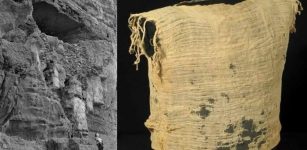 1,900-Year-Old Child’s Nightgown Found In Judean Cave Of Letters
Archaeology | Oct 5, 2023
1,900-Year-Old Child’s Nightgown Found In Judean Cave Of Letters
Archaeology | Oct 5, 2023 -
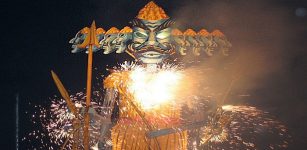 Ravana: Ten-Headed And Multi-Armed Demon King Of Lanka And Chief Antagonist In Epic Ramayana
Featured Stories | Oct 8, 2019
Ravana: Ten-Headed And Multi-Armed Demon King Of Lanka And Chief Antagonist In Epic Ramayana
Featured Stories | Oct 8, 2019 -
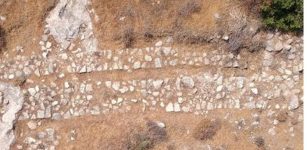 3,000-Year-Old Settlement Studied By Archaeologists In Cyprus
Archaeology | Sep 10, 2022
3,000-Year-Old Settlement Studied By Archaeologists In Cyprus
Archaeology | Sep 10, 2022 -
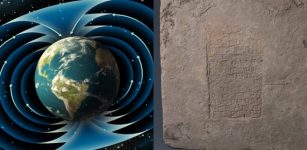 Mysterious Anomaly In Earth’s Magnetic Field Documented On 3,000-Year-Old Mesopotamian Bricks
Archaeology | Dec 18, 2023
Mysterious Anomaly In Earth’s Magnetic Field Documented On 3,000-Year-Old Mesopotamian Bricks
Archaeology | Dec 18, 2023 -
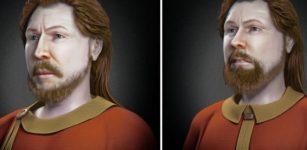 Stunning Facial Reconstruction Of Saint Ludmila’s Sons Of The Czech Royal Premyslid Dynasty
Archaeology | Mar 8, 2021
Stunning Facial Reconstruction Of Saint Ludmila’s Sons Of The Czech Royal Premyslid Dynasty
Archaeology | Mar 8, 2021 -
 Underground Hellenistic Necropolis With Tombs With Frescoes, Reliefs Unearthed In Naples, Italy
Archaeology | May 13, 2023
Underground Hellenistic Necropolis With Tombs With Frescoes, Reliefs Unearthed In Naples, Italy
Archaeology | May 13, 2023 -
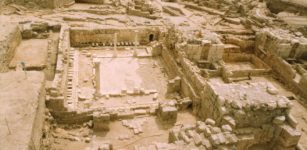 Large Roman Public Latrine With 60 Wooden Seats Discovered In Bet Shean, Israel
Archaeology | Sep 25, 2023
Large Roman Public Latrine With 60 Wooden Seats Discovered In Bet Shean, Israel
Archaeology | Sep 25, 2023 -
 ‘Impossible’ Advanced Ancient Technology In Mesopotamia – Evidence Of Other-Worldly Interaction?
Ancient Mysteries | May 24, 2021
‘Impossible’ Advanced Ancient Technology In Mesopotamia – Evidence Of Other-Worldly Interaction?
Ancient Mysteries | May 24, 2021 -
 12,000-Year-Old Archaeological Evidence Of Human-Dog Friendship In Alaska
Archaeology | Dec 5, 2024
12,000-Year-Old Archaeological Evidence Of Human-Dog Friendship In Alaska
Archaeology | Dec 5, 2024 -
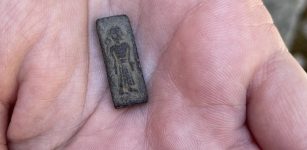 Rare And Tiny Ancient Stamps Found In Falster May Show The Way To An Unknown King’s Home
Archaeology | Jul 26, 2023
Rare And Tiny Ancient Stamps Found In Falster May Show The Way To An Unknown King’s Home
Archaeology | Jul 26, 2023 -
 11,000-Year-Old Human Remains Found At Heaning Wood Bone Cave In Britain
Archaeology | Jan 25, 2023
11,000-Year-Old Human Remains Found At Heaning Wood Bone Cave In Britain
Archaeology | Jan 25, 2023 -
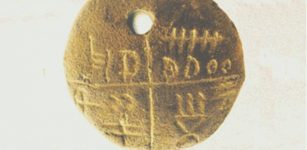 Controversial Tartaria Tablets: The First Writing System In The World?
Artifacts | Nov 13, 2014
Controversial Tartaria Tablets: The First Writing System In The World?
Artifacts | Nov 13, 2014 -
 The Face Of The Amarakarei – Remarkable Enormous Face Caved Into Stone Cliffs In Peru
Places | Nov 20, 2015
The Face Of The Amarakarei – Remarkable Enormous Face Caved Into Stone Cliffs In Peru
Places | Nov 20, 2015 -
 Underwater City: Unveiling The Secrets At The Bottom Of Fuxian Lake
Ancient Mysteries | Jun 13, 2015
Underwater City: Unveiling The Secrets At The Bottom Of Fuxian Lake
Ancient Mysteries | Jun 13, 2015 -
 Was Tintagel Castle A Fortress Used By Iconic Hero King Arthur?
Ancient Mysteries | Mar 12, 2016
Was Tintagel Castle A Fortress Used By Iconic Hero King Arthur?
Ancient Mysteries | Mar 12, 2016 -
 Ancient Script Reveals Mysterious Location Of Legendary Hanging Garden Of Babylon
Featured Stories | Apr 4, 2014
Ancient Script Reveals Mysterious Location Of Legendary Hanging Garden Of Babylon
Featured Stories | Apr 4, 2014 -
 On This Day In History: He Wanted The Bible To Be Available To All – Burned At The Stake On Oct 6, 1536
News | Oct 6, 2016
On This Day In History: He Wanted The Bible To Be Available To All – Burned At The Stake On Oct 6, 1536
News | Oct 6, 2016 -
 On This Day In History: ENIGMA The Secret Code Used By Germans Was Finally Broken- On July 9, 1941
News | Jul 9, 2016
On This Day In History: ENIGMA The Secret Code Used By Germans Was Finally Broken- On July 9, 1941
News | Jul 9, 2016 -
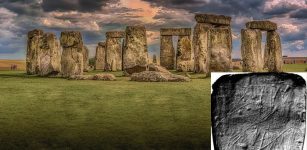 New Light On Prehistoric Chalk Plaques From Stonehenge Using Innovative Technology
Archaeology | Nov 3, 2021
New Light On Prehistoric Chalk Plaques From Stonehenge Using Innovative Technology
Archaeology | Nov 3, 2021


